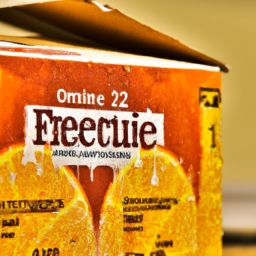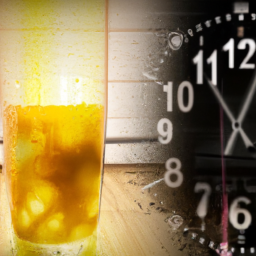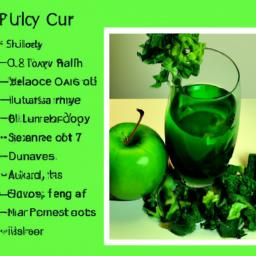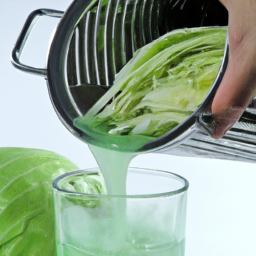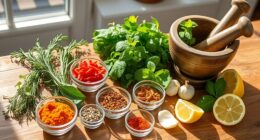As someone who enjoys the delicious flavor of orange juice, I often wonder how long it can be consumed without refrigeration before spoiling. The answer to this question is not simple, as there are several factors that can impact the freshness of orange juice.
In this article, I will delve into the science behind orange juice spoilage, the risks of consuming spoiled juice, and provide tips on how to store orange juice properly to maximize its shelf life.
Refrigeration is a crucial factor in maintaining the freshness and quality of food products, and orange juice is no exception. However, there may be situations where refrigeration is not readily available, such as during outdoor activities or power outages.
In these cases, it is important to understand how long orange juice can be safely left unrefrigerated before it becomes unfit for consumption. By understanding the factors that affect orange juice spoilage and taking proper storage measures, you can ensure that your orange juice stays fresh and safe to drink for as long as possible.
Key Takeaways
- Lack of refrigeration can cause bacterial growth and foodborne illnesses in orange juice.
- Proper storage and handling of orange juice can extend its shelf life and prevent spoilage, including sealing and refrigerating, using airtight glass containers, and avoiding exposure to direct sunlight and light.
- Signs of spoiled orange juice include a sour smell or change in color, and consuming expired juice can lead to health problems such as food poisoning, allergic reactions, vomiting, diarrhea, and dehydration.
- Processing methods such as heat treatment and high pressure processing can extend the shelf life of orange juice, while pectinase treatment increases juice yield but not shelf life.
The Importance of Refrigeration
Refrigeration is crucial in keeping orange juice fresh and safe to drink, so it’s important to chill it as soon as possible. The importance of refrigeration cannot be overstated because it has a significant impact on food safety.
When orange juice is left unrefrigerated for an extended period, it becomes a breeding ground for bacteria. These bacteria can cause foodborne illnesses, which can be severe or sometimes even fatal. The impact of lack of refrigeration on food safety is not limited to bacteria alone.
Other factors, such as heat and light, can also affect the freshness and quality of orange juice. Heat can cause the juice to ferment, which makes it taste sour and unpalatable. Light, on the other hand, can cause the juice to lose its color and nutrients. These factors, combined with the growth of bacteria, can lead to spoilage of the juice.
The subsequent section will discuss the various factors that affect the spoilage of orange juice.
Factors That Affect Orange Juice Spoilage
When it comes to orange juice spoilage, there are three main factors that come into play: exposure to air, temperature, and exposure to light. As someone who works in the food industry, I know how crucial it is to control these variables to ensure the freshness and safety of our products.
Let’s dive into each of these factors and how they can affect the shelf life of orange juice.
Exposure to Air
If you leave orange juice out in the open, you’ll notice that exposure to air can start to affect its taste and quality fairly quickly. This is because oxygen in the air reacts with the juice’s natural sugars, causing it to lose its flavor and freshness. The effects of oxygen on orange juice can be seen in the form of discoloration and a change in aroma.
As the juice becomes exposed to more air, its shelf life decreases, and it becomes more susceptible to spoilage. To better illustrate the effects of oxygen on orange juice, imagine a freshly squeezed glass of orange juice. At first, the juice is vibrant, sweet, and refreshing. However, as time passes and the juice is left out in the open, the effects of oxygen become more apparent.
The once bright orange color of the juice starts to fade, and the juice becomes cloudy. The aroma also changes, becoming less sweet and more acidic. It’s essential to keep in mind that the longer the juice is exposed to air, the more significant its effects will be.
With this in mind, let’s explore how temperature can also impact the shelf life of orange juice.
Temperature
Maintaining a consistent temperature is crucial in preserving the quality and freshness of freshly squeezed orange juice. The temperature at which you store orange juice can greatly affect its taste and nutritional value.
If the juice is kept at room temperature for too long, it can become sour and develop an off-taste. On the other hand, if the juice is stored in a refrigerator that’s too cold, it can lose its natural sweetness and become watery.
To ensure that your orange juice remains fresh and flavorful, it’s important to choose the right temperature for storage. The ideal temperature for storing freshly squeezed orange juice is between 32°F and 40°F. At this temperature range, the juice can retain its nutritional value and flavor for up to five days.
If you want to store the juice for a longer period, you can freeze it for up to six months. However, keep in mind that freezing can affect the texture and taste of the juice, so it’s best to consume it within a few weeks of freezing.
As temperature plays a significant role in preserving the quality of orange juice, it’s important to also consider the effects of light exposure.
Exposure to Light
To keep the sunshine in your glass, be mindful of the light exposure your freshly squeezed orange juice receives. Light can have a significant impact on the quality of your juice, especially when it comes to vitamin C content and flavor.
When exposed to light, vitamin C in orange juice can degrade quickly, resulting in a loss of nutritional value. Additionally, light can cause the juice to develop an off-flavor, leading to an unpleasant drinking experience.
The best ways to protect your juice from light exposure are to store it in a dark, cool place, such as a pantry or refrigerator. It’s also important to use opaque containers to prevent any light from penetrating the juice. If you’re using a clear container, it’s advisable to wrap it in aluminum foil or place it in a paper bag.
By taking these precautions, you can extend the lifespan of your orange juice and ensure that it remains fresh and delicious for as long as possible.
Now, let’s move on to the next topic of discussion: how long can orange juice be left unrefrigerated?
How Long Can Orange Juice Be Left Unrefrigerated?
Orange juice can only be left unrefrigerated for a short period of time before it loses its freshness and quality. This is because orange juice is a perishable product that’s prone to spoilage. When left unrefrigerated, the juice can quickly become a breeding ground for bacteria, which can lead to potential health risks.
To ensure the shelf stability of orange juice, it’s important to store it in the refrigerator at all times. If you need to transport orange juice, make sure to keep it in a cooler with ice packs to maintain its temperature. Remember that once orange juice has been opened, it should be consumed within a few days, even if it has been refrigerated.
By following these guidelines, you can enjoy fresh and safe orange juice every time. If you notice any signs that orange juice has gone bad, such as a sour smell or a change in color, it’s best to discard it immediately. These signs indicate that the juice has been contaminated and is no longer safe to consume.
To avoid potential health risks, always check the expiration date and store orange juice properly.
Signs That Orange Juice Has Gone Bad
You thought that glass of tangy goodness was safe to drink, didn’t you? But now you’re wondering if that pungent odor and strange color means your precious orange nectar has gone bad. Don’t worry, you’re not alone.
Orange juice that has gone bad can be a real disappointment, but there are ways to use expired juice rather than throwing it away. Here are some ideas to help you turn that spoiled orange juice into something useful:
-
Use it as a natural cleaner: Orange juice is acidic and can be used to clean surfaces like kitchen counters, floors, and even bathroom tiles.
-
Make a marinade or salad dressing: Add some herbs and spices to the juice and use it as a marinade for chicken or fish, or mix it with olive oil and vinegar for a flavorful salad dressing.
Another alternative use for spoiled orange juice is to use it as a fertilizer for plants. The acid in the juice can help to break down organic matter in the soil and provide nutrients for your plants.
But before you get too excited, it’s important to note the risks of consuming spoiled orange juice.
Risks of Consuming Spoiled Orange Juice
If you’re not careful, consuming expired orange juice can lead to serious health risks. Spoiled orange juice can cause food poisoning, which can lead to vomiting, diarrhea, and dehydration.
The most common spoilage causes are exposure to air, light, and heat. Bacteria thrive in warm temperatures and can grow rapidly in orange juice that’s been left unrefrigerated for too long.
Aside from food poisoning, consuming spoiled orange juice can also lead to other health risks such as allergic reactions. This is because the bacteria that grow in spoiled orange juice can produce toxins that can cause allergic reactions in some people.
It’s important to always check the expiration date of your orange juice, and to properly store it in the refrigerator to prevent spoilage. When it comes to storing orange juice properly, there are a few key things to keep in mind.
By properly sealing the container and storing it in the refrigerator, you can extend the shelf life of your orange juice and prevent it from spoiling too quickly. It’s also important to avoid exposing the juice to direct sunlight, as this can cause the juice to spoil faster.
How to Store Orange Juice Properly
Properly storing your OJ is key to keeping it fresh and safe to drink. If you have freshly squeezed orange juice, it’s best to store it in a glass container with an airtight lid. This will prevent any air from getting in and spoiling the juice. Plastic containers can also be used, but make sure they’re BPA-free and designed for food storage.
When storing orange juice, it’s important to keep it refrigerated at all times. If left unrefrigerated, bacteria can grow and cause the juice to spoil. Additionally, exposure to light can cause the juice to break down and lose its nutritional value.
To avoid this, store your orange juice in a dark, cool place away from direct sunlight. By properly storing your orange juice, you can ensure that it stays fresh and safe to consume for longer periods of time.
With these tips in mind, you can now prolong the shelf life of your orange juice. By taking the necessary precautions to store your juice properly, you can enjoy a refreshing glass of OJ any time you want without worrying about the risks of consuming spoiled juice.
Tips for Prolonging the Shelf Life of Orange Juice
When it comes to extending the shelf life of orange juice, there are a few tricks that I’ve picked up over time.
First and foremost, I always aim to buy fresh juice that hasn’t been sitting on the shelf for too long.
If you’re planning on storing juice for an extended period of time, using preservatives can be helpful.
Another option is to add citric acid to the juice, which can help to slow down the growth of bacteria and extend the shelf life.
Buying Fresh Juice
Freshly squeezed orange juice is a great way to start your day, and as the saying goes, "you can’t squeeze blood from a turnip,"so make sure to buy it fresh.
When it comes to buying fresh orange juice, there are two main options: juice bar options and juicing at home. Juice bars offer the convenience of having fresh juice prepared for you, but can be more expensive than juicing at home. However, juicing at home requires a juicer and the time to prepare the juice.
If you choose to buy fresh orange juice, make sure to check the expiration date and purchase it as close to the date it was made as possible. Freshly squeezed orange juice can typically last up to 3-5 days if stored in the refrigerator, but if left unrefrigerated, it can spoil much quicker.
In the next section, we will discuss using preservatives to prolong the shelf life of orange juice.
Using Preservatives
Preservatives may be necessary to keep your juice safe and healthy, but it’s important to understand the impact they can have on your body.
There are two types of preservatives: natural and synthetic. Natural preservatives, such as citric acid and vitamin C, are derived from plants and are generally safe to consume. Synthetic preservatives, on the other hand, are chemically created and may have negative effects on your health if consumed in large amounts.
When choosing a preservative for your orange juice, it’s important to consider the potential risks and benefits. Natural preservatives may be a safer option, but they may not be as effective as synthetic preservatives in preventing spoilage. Ultimately, the choice of preservative will depend on your personal preferences and the length of time you plan to keep the juice unrefrigerated.
To further extend the shelf life of your orange juice, you may consider adding citric acid. Citric acid is a natural preservative that can be found in citrus fruits, and it can help prevent the growth of bacteria and mold. However, it’s important to use citric acid in moderation, as consuming too much can lead to stomach upset and other digestive issues.
Adding Citric Acid
To really kick up the tanginess of your homemade OJ, consider adding a touch of citric acid. This natural preservative is found in citrus fruits and can help prolong the shelf life of your orange juice. Not only that, but it can also enhance the flavor and provide numerous health benefits.
One of the main benefits of adding citric acid to orange juice is its ability to boost the immune system. It’s packed with antioxidants that can help fight off harmful bacteria and viruses. Additionally, citric acid can aid in digestion by breaking down food more efficiently and supporting the production of enzymes in the body.
If you’re looking for recipes that use citric acid in orange juice, try adding a teaspoon to your morning smoothie or mixing it into a refreshing summer drink.
As beneficial as citric acid may be, it’s important to note that adding it to unrefrigerated orange juice will not necessarily make it safe to drink for an extended period of time. Other factors, such as how long the juice has been sitting out and the temperature it’s been exposed to, can also affect its safety and quality.
Other Factors to Consider
When it comes to the shelf life of orange juice, there are several other factors to consider beyond refrigeration. The type of orange juice, packaging, and processing methods can all impact its shelf life.
Additionally, it’s important to know whether it’s safe to consume expired orange juice and whether drinking spoiled orange juice can make you sick.
Type of Orange Juice
Nothing compares to a freshly squeezed glass of orange juice, but even pasteurized varieties can spoil quickly if left unrefrigerated. The type of orange juice you have can also affect how long it can last outside of the fridge.
Here are some things to consider:
-
Fresh vs. Concentrated: Fresh orange juice has a shorter shelf life than concentrated orange juice. This is because fresh juice hasn’t been pasteurized, which means it can spoil faster. Concentrated juice has been pasteurized, which gives it a longer shelf life.
-
Organic vs. Conventional: Organic orange juice may not have as long of a shelf life as conventional orange juice. This is because organic juice doesn’t contain any preservatives, which can extend the shelf life of conventional juice.
-
Added Ingredients: Orange juice that contains added ingredients, such as sugar or other fruit juices, may not last as long outside of the fridge. This is because these ingredients can promote the growth of bacteria and other microorganisms.
Considering these factors can help you determine how long your orange juice can last unrefrigerated. However, it’s important to note that these are just general guidelines, and the specific shelf life of your orange juice can depend on a variety of factors.
Now, let’s move on to the next section about packaging and how that can affect the shelf life of orange juice.
Packaging
As you reach for that carton of orange juice, you may not realize that the packaging it comes in can actually make a big difference in how fresh it stays.
Different types of packaging can have varying effects on the juice’s shelf life. For example, glass bottles are great for keeping the juice fresh and flavorful for a longer period of time, but they may not be the best option for long term storage due to their weight and fragility.
On the other hand, plastic bottles are lighter and more convenient to handle, making them a good choice for storage, but they may not be as effective at preserving freshness as glass bottles.
When it comes to the best packaging for long term storage, airtight containers are the way to go. These containers prevent air and moisture from getting in, which can cause the juice to spoil quickly.
One option is vacuum-sealed pouches that remove all the air from the container, but they may not be as readily available in grocery stores. Another option is Tetra Pak cartons, which are made of several layers of material to protect the juice from light and air. These cartons are also lightweight and easy to handle, making them a popular choice for long term storage.
Now, let’s move on to the next section about processing methods and how they can affect the shelf life of orange juice.
Processing Methods
One factor that significantly impacts the shelf life of packaged juice is the processing method used during production. Juice preservation is a critical aspect of fruit processing techniques.
Here are three sub-lists that highlight different processing methods and their effect on juice preservation:
-
Heat Treatment: This method involves heating juice to high temperatures to kill bacteria and enzymes that can cause spoilage. The heat treatment can extend the shelf life of juice by several months.
-
High Pressure Processing: This method involves applying high pressure to the juice, which inactivates microorganisms that cause spoilage. This method can preserve the juice for a few weeks to a few months.
-
Pectinase Treatment: This method involves adding pectinase to the juice, which breaks down the pectin in the fruit to release more juice. This method can increase the yield of juice, but it does not significantly impact the shelf life of the juice.
Understanding the impact of processing methods on juice preservation is crucial for ensuring the freshness and safety of packaged juice. Moving forward, it’s important to consider how these methods influence the quality of juice over time and how consumers can make informed decisions about drinking expired juice.
Can You Drink Expired Orange Juice?
Yes, you can still drink expired OJ, but it’s important to know the risks and signs of spoilage before taking a sip.
When orange juice is past its expiration date, it may not taste as fresh as it did when it was first bottled, but it isn’t necessarily harmful to drink. However, if the juice has been sitting unrefrigerated for too long, it can ferment and develop harmful bacteria that can cause illness.
It’s important to check the expiration date before drinking OJ and to store it in the refrigerator to prevent bacterial growth.
If you have expired orange juice that you’re not comfortable drinking, there are alternative uses for it. You can use it as a marinade for meat or as an ingredient in baked goods to add a citrusy flavor. Orange juice can also be used in homemade cleaning solutions as a natural degreaser or to remove stains from fabrics.
However, if you do decide to drink expired orange juice, be aware of the potential health risks and always check for signs of spoilage before taking a sip.
Have you ever wondered if drinking spoiled orange juice can make you sick?
Can You Get Sick from Drinking Spoiled Orange Juice?
Drinking spoiled OJ can lead to stomach discomfort and even food poisoning, so it’s crucial to be cautious when consuming expired beverages. Spoiled orange juice can contain harmful bacteria that can make you sick. Symptoms of consuming spoiled juice include diarrhea, vomiting, stomach cramps, and fever. In severe cases, it can even lead to hospitalization.
There are a few ways to detect spoiled juice. First, check for any visible signs of mold or discoloration. Spoiled juice may also have a sour or off taste and smell. If the juice has been unrefrigerated for an extended period, it’s best to err on the side of caution and throw it out.
It’s essential to consume only fresh, high-quality orange juice for optimal health benefits. How can you tell if orange juice has gone bad? One way is to check the expiration date and consume it before the expiration date. Another way is to check for any visible signs of mold or discoloration. Lastly, if the juice has an off taste and smell, it’s best to discard it.
It’s essential to practice safe food handling and prioritize your health when consuming any food or beverage.
How Can You Tell If Orange Juice Has Gone Bad?
Worried about whether your OJ is still good? Here’s a quick tip: check for signs of mold or discoloration, and trust your senses- if it smells or tastes off, it’s best to toss it.
But what if you accidentally left your orange juice out on the counter for too long? How can you tell if it’s still safe to drink? Here are four things to look out for:
-
Check the expiration date: If your orange juice has passed its expiration date, it’s best to err on the side of caution and throw it out.
-
Look for signs of spoilage: Mold, discoloration, and a sour smell are all indications that your juice may have gone bad.
-
Consider the container: If your juice has been sitting in an open container for an extended period of time, it’s more likely to spoil.
-
Use your senses: When in doubt, trust your sense of smell and taste. If your orange juice smells or tastes off, it’s best to dispose of it.
If you do find that your orange juice has gone bad, don’t worry- there are still ways to put it to good use. You can use it as a marinade for meat or vegetables, add it to smoothies or cocktails, or even use it as a natural cleaning solution.
And if you’re looking for an alternative to orange juice, try mixing up your morning routine with grapefruit juice, cranberry juice, or even a refreshing glass of water with lemon.
Frequently Asked Questions
What are the benefits of drinking orange juice?
It’s no coincidence that orange juice is packed with nutritional content. As for the best time to consume, it’s before a meal to aid in digestion. Trust me, the benefits of drinking orange juice are worth it.
How many oranges are typically used to make one serving of orange juice?
Typically, one serving of orange juice requires about three to four medium-sized oranges. The juicing process efficiency can vary based on the type of juicer used, but it’s important to consider the size of the oranges when determining the amount needed.
Can orange juice be frozen to prolong its shelf life?
Yes, orange juice can be frozen to extend its shelf life. It’s important to transfer the juice to a freezer-safe container, leaving some room for expansion. Thaw in the refrigerator and consume within a few days. Other storage options include refrigeration and pasteurization.
Is it safe to consume orange juice past its expiration date if it has been refrigerated?
I cannot recommend consuming refrigerated orange juice past its expiration date. While refrigeration can slow down the spoilage process, it does not guarantee safety. Extension of the expiration date is not advisable for safety reasons.
How does the packaging of orange juice affect its shelf life?
The packaging impact on orange juice shelf life is significant. Oxygen exposure can lead to oxidation and spoilage. Proper packaging, such as airtight containers, can extend the shelf life of orange juice.
Conclusion
In conclusion, it’s crucial to refrigerate orange juice to prevent it from going bad. Leaving orange juice unrefrigerated for too long can lead to spoilage, affecting its taste, aroma, and nutritional value.
The duration of unrefrigerated orange juice depends on various factors, such as the temperature and the presence of bacteria. Consuming spoiled orange juice can lead to health risks, such as vomiting, diarrhea, and stomach cramps.
Therefore, it’s essential to know the signs of spoilage and discard any orange juice that exhibits them. Proper storage and handling of orange juice can help prolong its shelf life and maintain its quality.
Remember to always keep orange juice refrigerated and consume it within its expiration date. With these tips, you can enjoy a refreshing glass of orange juice without worrying about its safety.
It’s as easy as squeezing juice out of an orange!
Ilana has been a vegan for over 10 years. She originally made the switch for health reasons, but soon found herself becoming more and more passionate about the ethical and environmental implications of a vegan lifestyle. Ilana is the author of The Graceful Kitchen, a blog all about veganism. She loves to cook up delicious and nutritious vegan meals, and share her recipes with others who are interested in leading a cruelty-free life. Ilana is also a strong advocate for using whole foods as the foundation of a healthy diet, and believes that going vegan is one of the best ways to achieve this.
